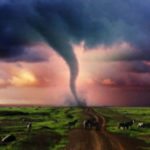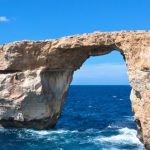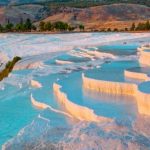 Technology
Technology  Technology
Technology  Humans
Humans 10 Everyday Human Behaviors That Are Actually Survival Instincts
 Animals
Animals 10 Animals That Humiliated and Harmed Historical Leaders
 History
History 10 Most Influential Protests in Modern History
 Creepy
Creepy 10 More Representations of Death from Myth, Legend, and Folktale
 Technology
Technology 10 Scientific Breakthroughs of 2025 That’ll Change Everything
 Our World
Our World 10 Ways Icelandic Culture Makes Other Countries Look Boring
 Misconceptions
Misconceptions 10 Common Misconceptions About the Victorian Era
 Mysteries
Mysteries 10 Strange Unexplained Mysteries of 2025
 Miscellaneous
Miscellaneous 10 of History’s Most Bell-Ringing Finishing Moves
 Technology
Technology Top 10 Everyday Tech Buzzwords That Hide a Darker Past
 Humans
Humans 10 Everyday Human Behaviors That Are Actually Survival Instincts
 Animals
Animals 10 Animals That Humiliated and Harmed Historical Leaders
Who's Behind Listverse?

Jamie Frater
Head Editor
Jamie founded Listverse due to an insatiable desire to share fascinating, obscure, and bizarre facts. He has been a guest speaker on numerous national radio and television stations and is a five time published author.
More About Us History
History 10 Most Influential Protests in Modern History
 Creepy
Creepy 10 More Representations of Death from Myth, Legend, and Folktale
 Technology
Technology 10 Scientific Breakthroughs of 2025 That’ll Change Everything
 Our World
Our World 10 Ways Icelandic Culture Makes Other Countries Look Boring
 Misconceptions
Misconceptions 10 Common Misconceptions About the Victorian Era
 Mysteries
Mysteries 10 Strange Unexplained Mysteries of 2025
 Miscellaneous
Miscellaneous 10 of History’s Most Bell-Ringing Finishing Moves
10 Rare but Deadly Natural Phenomena
Mother Nature can be one wild and crazy lady. While she usually keeps things pretty chill, now and then, she pulls out all the stops. She unleashes some intense natural phenomena that can be deadly. Brace yourself because these ten rare but terrifying events will blow your mind.
Related: 10 Misconceptions About the World Around Us
10 Mega Tsunami
Imagine a wall of water so colossal it could swallow entire cities in minutes. That’s the terrifying reality of mega-tsunamis, nature’s way of saying, “Don’t mess with me!”
Catastrophic events like asteroid impacts, underwater landslides, or volcanic eruptions trigger these behemoths. In 2004, Indonesia’s Mount Krakatoa erupted, unleashing a mega-tsunami that reached 120 feet (36 meters)—taller than a 12-story building. The wave traveled up to 450 mph (725 km/h), making it one of the fastest natural disasters on record.
The largest mega-tsunami ever recorded occurred 73,000 years ago when a massive landslide off the coast of Africa sent a 1,600-foot (500-meter) wave crashing into the Canary Islands. This surge would have made the tallest skyscrapers look like mere speed bumps.
While mega-tsunamis are rare, their destructive power is no laughing matter. Imagine being a hapless beachgoer, sipping your mojito, when suddenly a wall of water the size of the Statue of Liberty comes barreling toward you. Talk about a rude awakening.
9 Water Spouts
Water spouts are fascinating natural phenomena that occur over bodies of water. These rotating columns of condensed water vapor can be both mesmerizing and petrifying. Imagine a tornado, but instead of ripping through fields and neighborhoods, it’s dancing across the surface of a lake or the open ocean.
The largest recorded water spout was spotted off the coast of Catatumbo, Venezuela, in 2010. It reached a staggering 3,000 feet (914 meters)—that’s over half a mile high! To put that into perspective, it’s taller than the Statue of Liberty. Imagine trying to take a selfie with that in the background.
While water spouts may look like fun, playful water spirals, they can be quite dangerous. With wind speeds reaching up to 100 mph (160 km/h), these aquatic twisters can capsize small boats, damage docks and coastal structures, and even injure unsuspecting residents. In the end, water spouts are a humbling reminder that Mother Nature keeps us on our toes. Respect the spout, my friends.
8 Limnic Eruption
Limnic eruptions are the stuff of nightmares—imagine a lake suddenly belching forth a deadly cloud of carbon dioxide, suffocating everything in its path. It’s like Mother Nature decided to pull a prank on unsuspecting humans, except the punchline involves mass asphyxiation.
The largest recorded limnic eruption occurred in 1986 at Lake Nyos in Cameroon, where a cloud of CO2 killed over 1,700 people and 3,500 livestock in minutes. The lake had been quietly building up dissolved gases in its depths until, one day, it couldn’t hold it in anymore. Out came a lethal vapor that flowed down the valley, leaving nothing but lifeless bodies in its wake.
Limnic eruptions aren’t just a one-time event. They can happen again and again at the same lake, like an evil genie that won’t stay in its bottle. Scientists have even found evidence of prehistoric limnic eruptions that wiped out entire civilizations.
7 Volcanic Eruptions
The largest recorded volcanic eruption in history was the 1815 eruption of Mount Tambora in Indonesia, ejecting an estimated 160 cubic kilometers of material into the atmosphere. That’s enough volcanic ash to cover Rhode Island in a layer over 6.5 feet (2 meters) deep. Talk about a messy cleanup.
But it’s not just the sheer volume of material that makes volcanic eruptions so impressive. The temperatures involved are enough to make even the most hardcore pyromaniac blush. Lava can reach over 2,200°F (1,200°C), hot enough to melt your smartphone, car, and anything else in its path.
Some eruptions have been known to release the energy equivalent of thousands of atomic bombs. It’s no wonder volcanoes have been the subject of so many disaster movies—they’re nature’s very own special effects department, just waiting to put on a show.
6 Flammable Ice Bubbles
Imagine a frozen lake, its surface dotted with bubbles that defy the laws of nature. My friends, these are no ordinary bubbles—they’re flammable ice bubbles.
Formed when methane gas becomes trapped under the ice, these bubbly beauties are a sight to behold. As the gas builds up pressure, it creates pockets of ice that you can ignite with a match or lighter. The resulting mini-fireworks display is mesmerizing and slightly terrifying, like a frozen Fourth of July celebration.
The largest recorded instance of flammable ice bubbles occurred in Siberia, where 15,000 of these fiery spheres were spotted on a single lake. Researchers estimate that the total volume of methane trapped in these bubbles was equivalent to over 3,000 party balloons—more than enough to power a small pyrotechnics show.
While these bubbles may look harmless, they’re a reminder of the effects of climate change. As global temperatures rise, more methane is released from thawing permafrost, increasing these flammable ice formations.
5 Ocean “Black Holes”
Forget the black holes in space. The real cosmic monsters are lurking on Earth, in the depths of our oceans. These underwater “black holes” are as mysterious and terrifying as their celestial counterparts but with a decidedly more watery twist.
Imagine a swirling vortex of doom, a whirlpool so powerful that it could suck in an entire ship without leaving a trace. That’s the reality of ocean black holes, also known as “blue holes” for their deep, dark appearance. These underwater sinkholes are formed when salt-heavy water sinks through the ocean, creating a vacuum-like suction capable of dragging in anything unfortunate enough to get too close.
The largest known ocean black hole is the Bermuda Triangle, a notorious stretch of the Atlantic Ocean where countless ships and planes have mysteriously vanished. While the jury is still out on whether the Bermuda Triangle is truly cursed, one thing is certain. If you find yourself caught in an ocean black hole, your chances of survival are about as good as a snowball’s chance in… well, you get the idea.
4 Dirty Thunderstorms
Imagine a thunderstorm so intense it’s not just raining cats and dogs—it’s raining ash, soot, and even molten rock. Welcome to the world of dirty thunderstorms, where Mother Nature takes her anger management issues to a new level.
These rare atmospheric events occur when a volcanic eruption injects massive ash and debris into the sky, providing the perfect ingredients for a truly electrifying show. As the ash particles collide and rub against each other, they build up static electricity, which is discharged as lightning. The result? A dazzling display of nature’s fury, complete with flashes of light and the rumble of thunder, all while the sky rains down a shower of volcanic grime.
The largest recorded dirty thunderstorm occurred during the 2010 eruption of Iceland’s Eyjafjallajökull volcano. The ash plume reached a staggering 5.6 miles (9 kilometers) into the atmosphere. The lightning strikes were so intense that they could be seen from over 124 miles (200 kilometers) away, and the ash-laden rain left a layer of volcanic dust on everything in its path.
3 Brinicles
Imagine a scene straight out of a sci-fi horror flick—ghostly, translucent fingers emerging from the ocean, slowly creeping across the seafloor, freezing everything in their path. Welcome to the chilling world of brinicles, also known as “icy fingers of death.”
These bizarre natural phenomena are formed when super-cooled brine, a byproduct of sea ice formation, is removed from the ice and sinks. As the brine hits the relatively warmer ocean, it freezes into a tubular structure that resembles an icy stalactite. The result is a mesmerizing, yet deadly, display of nature’s power.
The largest brinicle ever recorded was spotted in the Antarctic in 2011, measuring a staggering 30 feet (9 meters) in length. Imagine the terror of being a hapless sea creature, minding your own business, only to be suddenly encased in an icy tomb by these creeping fingers. It’s enough to give you chills (pun intended).
2 Rogue Waves
Imagine peacefully cruising along the open ocean, sipping your piña colada, and soaking up the sun. Suddenly, a towering wall of water appears, ready to swallow your ship. Welcome to the world of rogue waves—the ocean’s equivalent of a bully from your childhood who couldn’t resist picking on the little guy.
These mysterious and unpredictable monsters can reach 100 feet (30 meters), dwarfing even the mightiest cruise ships. In 1995, the infamous “Draupner wave” was recorded off the coast of Norway, measuring 84 feet (25.6 meters)—that’s taller than a seven-story building. Sailors have long whispered tales of these monsters. Still, it wasn’t until the 20th century that scientists finally acknowledged their existence.
Experts believe rogue waves are caused by strong winds, ocean currents, and just plain old bad luck. And unlike their counterparts in the schoolyard, rogue waves don’t discriminate—they’ll happily swallow up everything from cargo ships to oil platforms, leaving devastation in their wake.
Advances in technology have allowed scientists to better predict and detect these rogue waves, giving sailors a fighting chance to avoid becoming the next victims of the ocean’s most notorious troublemakers.
1 Fire Whirls
Fire Whirls are a rare and mesmerizing natural phenomenon that can turn even the calmest campfire into a raging inferno. Imagine a tornado made of fire, spinning and twisting with a mind of its own, capable of lifting debris and small animals into the air like a fiery vortex of doom.
These fiery funnels are created when intense heat, dry conditions, and the right wind patterns produce a spinning column of flame. They can reach over 200 feet (60 meters) and spin at speeds of up to 45 mph (72 km/h), making them a true sight to behold—if you’re at a safe distance.
The largest recorded fire whirl occurred in 1923 during the Great Kanto Earthquake in Japan, where one measured an astonishing 800 feet (243 meters) tall. Eyewitnesses reported that the spinning column of fire was so powerful it could uproot trees and hurl them through the air like matchsticks. Thankfully, such fire whirls are rare, but even smaller ones can be dangerous, with the ability to toss burning debris and spread fires rapidly.
The next time you’re roasting marshmallows around the campfire, be grateful that your humble little flame isn’t spinning out of control and threatening to send you and your s’mores flying.








